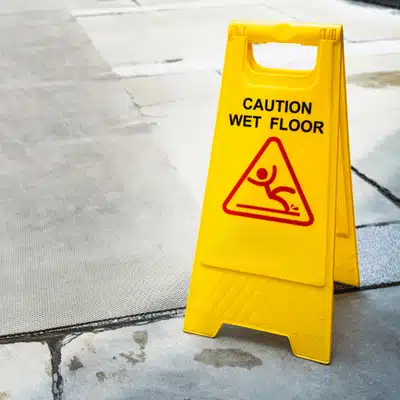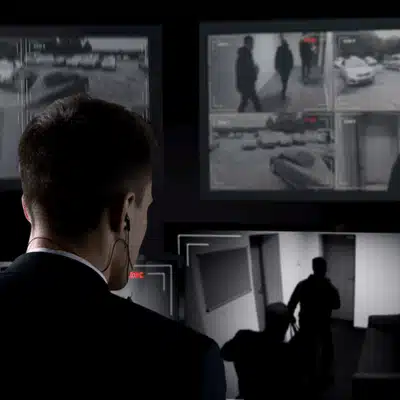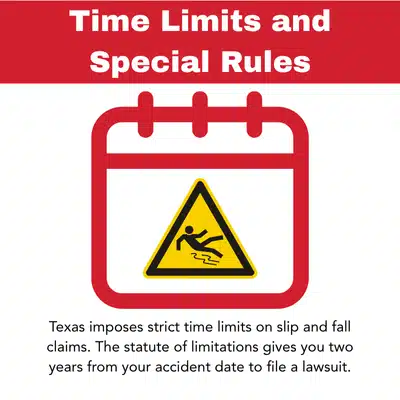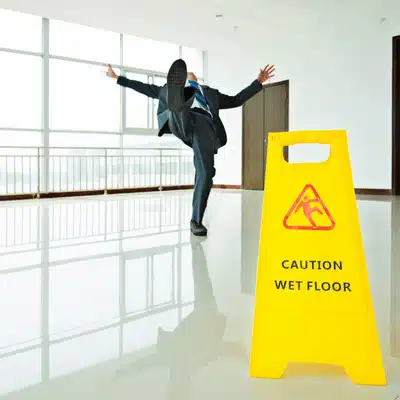Getting hurt on someone else’s property doesn’t automatically mean you have a legal case. Texas slip and fall laws require a burden of proof in negligence cases before slip and fall injury liability attaches, letting owners raise a knowledge defense based on hazard responses. Knowing the statute of limitations and rules shows if your accident qualifies as a valid claim.
Texas uses premises liability theory to handle most slip and fall accidents. This legal framework makes property owners responsible only when they were negligent about dangerous conditions. Property management companies and business owners must keep their spaces reasonably safe, but they aren’t responsible for every accident that happens.
The law separates injuries caused by property conditions from those caused by ongoing activities. Most slip and fall cases involve dangerous premises conditions like wet floors or broken steps. Simply falling and getting hurt doesn’t create automatic liability under Texas slip and fall laws.
Texas places the burden of proof on injured people. You must establish four key elements to win your case:

A hazardous condition creating unreasonable risk breaches the property owner’s duty. Examples include wet floors, uneven pavement, or poor lighting. Neglecting this duty and responsibility may trigger a personal injury lawsuit over slip hazards visitors don’t expect.
The property owner knew or should have known about the dangerous condition. This happens through actual knowledge (they saw it) or constructive knowledge (it existed long enough that proper inspection would have found it).
The owner breached their duty by not fixing the hazard or posting warning signs within a reasonable time. Even simple warnings can sometimes protect owners from liability if done properly.
The owner’s negligence directly caused your accident and resulting injuries. You need medical records and other documentation proving real damages like medical bills, lost wages, and pain.
These elements work together. Missing any one makes your case much harder to win. The knowledge defense often becomes the biggest hurdle since property owners rarely admit they knew about hazards.
Your legal status when the accident happened determines what duty the property owner owed you. Texas recognizes three categories:
Invitees receive the highest protection. Customers in stores and other business visitors fall into this group. Property owners must inspect regularly, fix hazards, and warn about known dangers and risks of injuries. This invitee status creates the strongest foundation for premises liability cases.
Licensees have permission to be there but for their own purposes, like social guests. Owners must warn about hidden dangers they actually know about but don’t need to inspect for unknown problems.
Trespassers get minimal protection. Adult trespassers can’t usually recover unless the owner intentionally harmed them. The trespasser rule generally prevents any compensation. However, children may be protected under the attractive nuisance doctrine for dangerous conditions that draw kids in.
Visitor classification significantly impacts your case strategy and chances of success.
Most slip and fall cases hinge on proving the property owner’s knowledge. Texas courts require clear evidence of notice:

Actual knowledge means someone told the owner about the hazard or they saw it themselves. Security footage showing employees walking past spills can establish this. The Texas Supreme Court ruled that knowledge must relate to the specific condition that caused your accident, not just general awareness of potential problems.
Constructive knowledge applies when hazards existed long enough that reasonable inspection would have found them. A spill sitting for hours in a busy store suggests the owner should have discovered it. You need specific evidence about timing, not just guesswork about how long conditions existed.
Strong evidence includes accident reports, maintenance records showing inspection schedules, surveillance video, and witness accounts. Quick documentation after your accident becomes crucial since hazards often get cleaned up immediately.
Property owners and their business liability insurance companies raise several defenses to avoid paying compensation:
They claim the hazard appeared too suddenly for any reasonable response. Overcoming this requires showing the condition existed long enough or that their inspection procedures were inadequate.
If the danger was clearly visible, owners argue they had no duty to warn. However, exceptions exist when you had no choice but to encounter the hazard.
Texas reduces your compensation if you were partly at fault. Being 50% or more responsible eliminates your recovery entirely. Common accusations include not watching where you walked or ignoring posted warnings.
Property owners aren’t responsible for natural weather conditions like rainwater or ice that accumulate normally. Unnatural accumulations from drainage problems or building defects create different liability.
Understanding these defenses helps you gather better evidence and avoid actions that hurt your case.

Texas imposes strict time limits on slip and fall claims. The statute of limitations gives you two years from your accident date to file a lawsuit. Missing this deadline usually destroys your case completely.
Government property liability slip cases have even shorter time limits. You must provide written notice to city, county, or state entities within months of your accident. These notice requirements are much stricter than private property cases.
Successful cases can recover several types of damages:
Economic damages cover medical expenses, lost wages, and other financial losses. Keep detailed records of all costs related to your injuries.
Non-economic damages compensate for pain, suffering, and reduced quality of life. These often represent the largest portion of settlement amounts.
Most compensation comes from liability insurance rather than property owners personally. Many cases resolve through settlement negotiations rather than going to trial.

Taking proper steps immediately after your accident strengthens any potential case:
File accident reports with property management or business owners. This creates official documentation and establishes notice.
Photograph the exact location and conditions that caused your fall. Collect witness accounts from anyone who saw the accident or hazard.
Seek medical attention promptly. This creates medical records linking your injuries to the accident and shows the severity of your condition.
Keep detailed records of all medical treatment, lost work time, and how injuries affect your daily life.
Consult an experienced premises liability attorney before talking to insurance adjusters. Lawyers understand how to preserve evidence, meet court procedures deadlines, and counter common defenses.
Texas slip and fall laws continue emphasizing that property ownership creates duties, not automatic responsibility for every accident. Success requires proving negligence through proper evidence and legal strategy.
The burden of proof remains on injured people to show that property owners failed their safety standards. This makes professional legal help valuable for navigating complex premises liability cases.
If you were hurt in a slip and fall accident on someone else’s property, don’t wait to explore your legal options. An experienced attorney can evaluate whether your situation meets the requirements for a valid claim under current Texas law.
Ready to learn if you have a valid slip and fall case? Contact our experienced premises liability attorneys today for a free consultation. We’ll review your accident, explain your rights, and help you pursue the compensation you deserve.